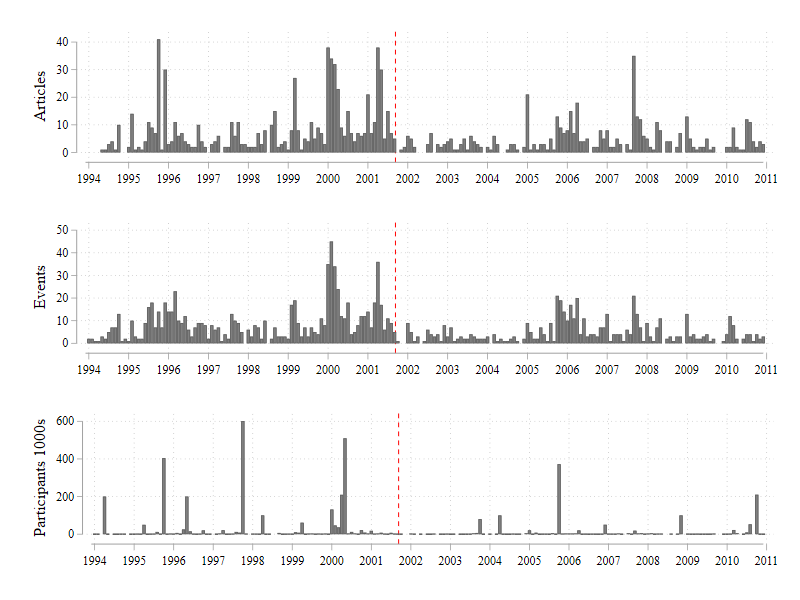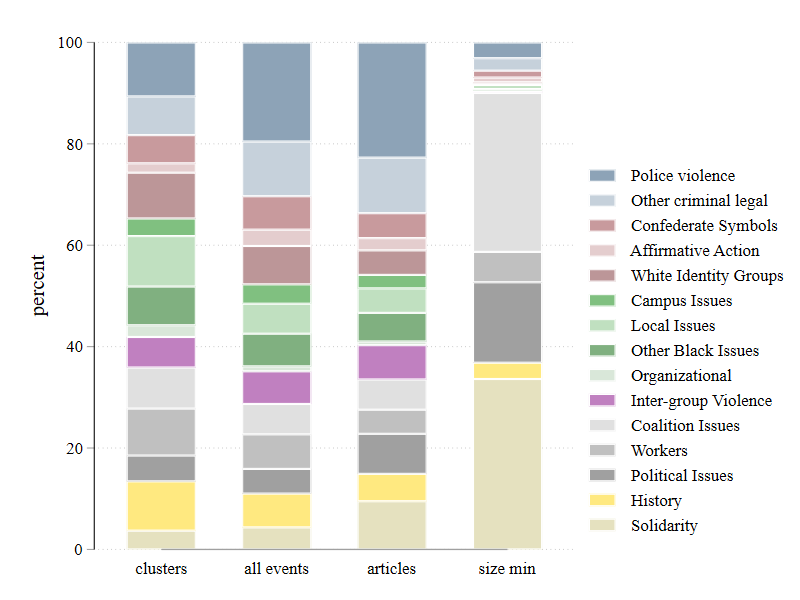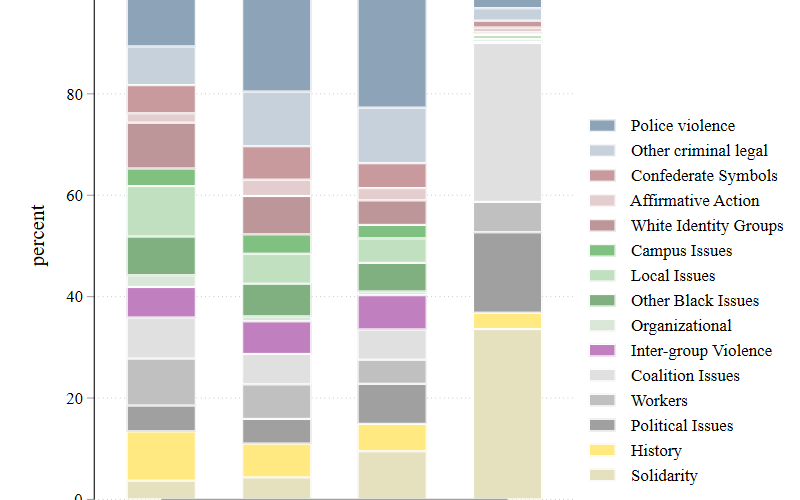Many discussions of the Black Lives Matter protests compare them to the Civil Rights era and skip right over the 50 years in the middle as if there was no Black movement then. But there were Black protest movements in the 1990s and 2000s that presage the Black Lives Movement of 2014 and after. In a new paper, my coauthors Chaeyoon Lim, Morgan Matthews, Alex Hanna and I use unique protest event data collected from newswires to shine light on this under-studied period. We find what looks like a building protest wave that probably began with the 1992 not guilty verdict for the police who beat Rodney King and was cut short by the terror attacks of 9/11, but began to rebuild after 2005.

Most of the protest issues seem very familiar. There were lots of past protests about police violence and the criminal legal system and protests and also protests about Confederate symbols and national history. We also saw defensive protests as affirmative action was rolled back in California, Florida, and elsewhere.

In the graph, “clusters” are tied to specific issues. Examples of specific issues are the New York police killing of Amadou Diallo, discrimination against Black customers by the Adams Mark hotel chain, a proposed anti-begging ordinance in Atlanta, or celebration of Martin Luther King day in 2005. Most issues involved only one event described in only one news article, but a few issues involved many events and were described in many articles. The graph shows that issues of incidents of police violence especially and also other criminal legal issues were especially likely to involve multiple events and get higher levels of news coverage than other issues. Events around Confederate symbols and White identity groups were also common but got proportionately less news coverage. The green bands represent a wide variety of issues that got proportionately less news coverage. The “solidarity” events that had large numbers of participants were the Million Man March and related events whose stated purpose was to build Black community and solidarity, while the “history” events celebrated Black history. Black people also participated with other groups in coalitions around a variety of issues and in worker campaigns and events around politics.
In the paper we provide more details about some of the specific issues that received a lot of news attention and put our quantitative protest event data into dialog with historical sources from the period. We discuss the importance of the Million Man March and spin-off marches including the Million Woman March and the Million Moms March. We describe the high-profile incidents of protests against police violence in New York police against Abner Louima, Amadou Diallo, Malcolm Ferguson, Patrick Dorismond, and Sean Bell and how these protests presaged the protests about the New York police killing of Eric Garner in 2014. We also discuss the 2001 Cincinnati police killing of Timothy Thomas and the “Cincinnati riot” and how it was discussed in the context of the 1992 Los Angeles “riot,” as well as the “riots” in Oakland around the police killing of Oscar Grant that was the first instance of a killing being recorded on a cellphone camera and going viral. Another big policing-related events included the 2007 mobilization around defending the Jena 6 and discussions of both unfair charging decisions and failure to prosecute hate crimes; it was also the first big Internet-organized march. We talk about the campaigns around Confederate symbols and memorializing Black history and how and why these are tied to struggles over the definition of nation.
Although the purpose of our paper is unapologetically descriptive, we do think there are theoretical implications. We find evidence of a high level of continuity between the struggles and diversity of the Black movement in the 1990s and 2000s and the more recent Black Lives Movement. We think the evidence is consistent with Critical Race Theory ideas about the ongoing struggle for Black advancement against White resistance. It is important to recognize the full range of Black movement activities and not focus too narrowly on just the issues that get a lot of attention in the mainstream [White] news sources.

